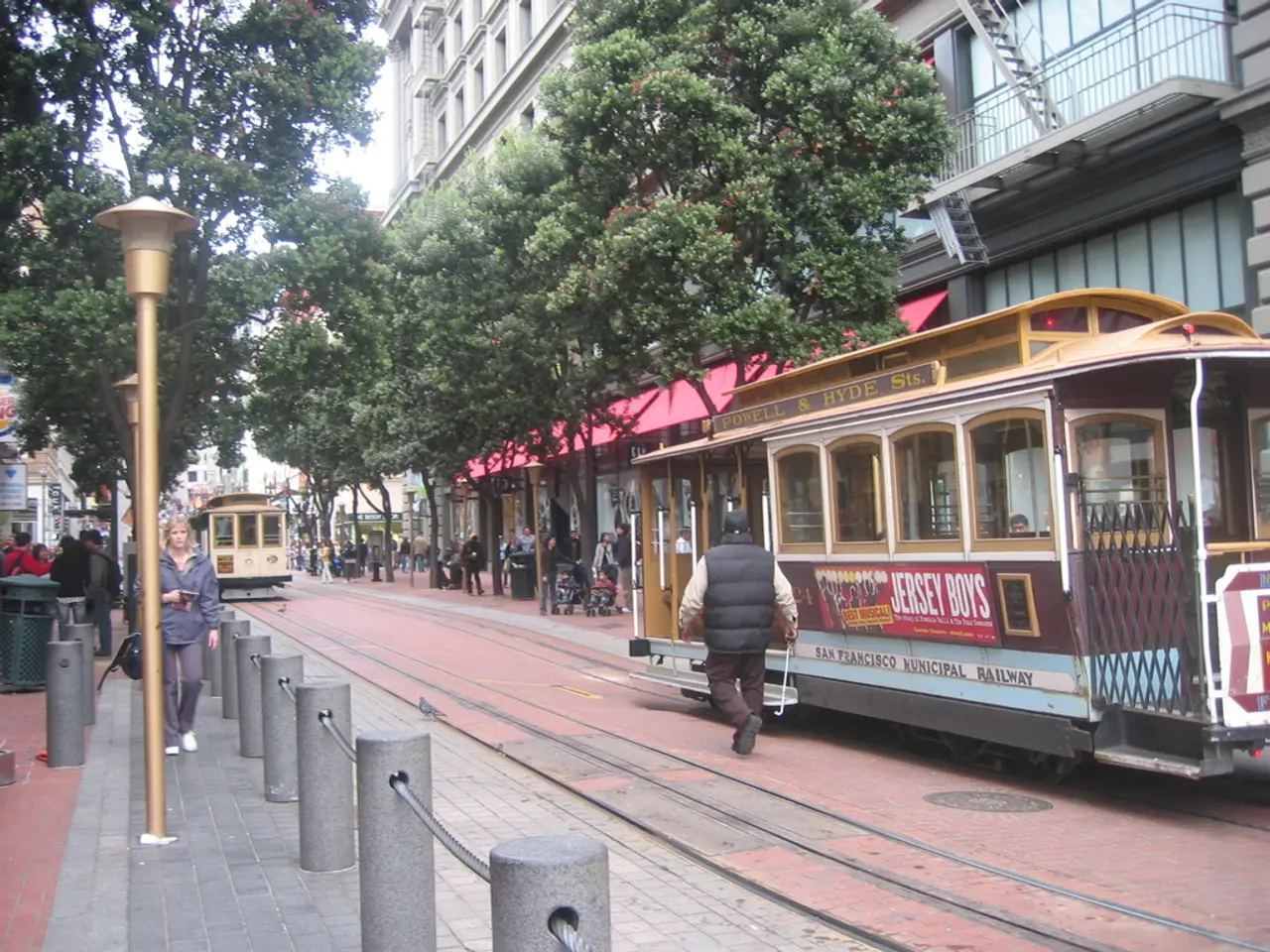Offenbach city investigates mobile tree trunks as an interim green space solution
Offenbach's city centre is set to witness a transformation, with plans for a comprehensive redesign of the S-Bahn station forecourt, featuring significantly more greenery in the coming years. The city centre, however, faces a unique challenge due to a desire for more greenery, technical limitations, and dense construction.
The market square, located in the heart of Offenbach, is currently under pressure from various usage demands such as pedestrian paths, bus stops, parking spaces, outdoor dining, lighting, seating areas, and underground garages. This dense array of functions has hindered the permanent greening of the market square.
A new opportunity for greening exists on the currently undeveloped forecourt of the S-Bahn station at the market square. Recognising this, the city council has provided the necessary funds for the "Green Belt" project.
In the interim, mobile tree tubs will be used on the S-Bahn station forecourt until the comprehensive redesign. The initial transplant shock of some tub trees has been addressed, and they have now recovered, thanks to the so-called Johannistrieb.
The need for more greenery in the city centre is frequently expressed, and each new heatwave underscores the need, as stated by the Planning and Building Commissioner, Paul-Gerhard Weiß. The city is committed to the goal of a "Green Belt" in the city centre, from the German Unity Monument, through the Stadthof, to the Hugenottenplatz.
To overcome the technical limitations and urban constraints, Offenbach is adopting innovative green infrastructure solutions tailored to space constraints and multifunctional use. These include green alleys or corridors, bioswales and rain gardens, downspout disconnection, modular green planters or trees in raised beds, and green and blue roofs on adjacent buildings.
Implementing these solutions requires careful design and technology to integrate green and grey infrastructure with respect for existing underground utilities and the multifunctional nature of the market square. Coordination between urban planners, utility managers, and community stakeholders is essential to balance greenery, infrastructure safety, and diverse public space uses.
By combining green infrastructure types like green alleys, bioswales, modular planters, and green roofs, alongside innovative stormwater management like downspout disconnection, Offenbach’s city centre can enhance greenery despite technical and spatial challenges.
Citizens will be involved in the process of planning the "Green Belt", ensuring a green and vibrant future for Offenbach's city centre.
[1] Green Infrastructure Solutions for Urban Areas (2012). European Environment Agency. [3] Green Infrastructure in the City of Offenbach am Main (2021). City of Offenbach am Main.
In the upcoming revamp of Offenbach's city centre, a focus on environmental science will be paramount, as the "Green Belt" project aims to introduce more green spaces, such as the undeveloped S-Bahn station forecourt. To address the dense array of functions and technical limitations in the market square, innovative home-and-garden solutions like green alleys, bioswales, and modular planters will be integrated into the urban landscape, enhancing the lifestyle and environmental quality of the city centre.





